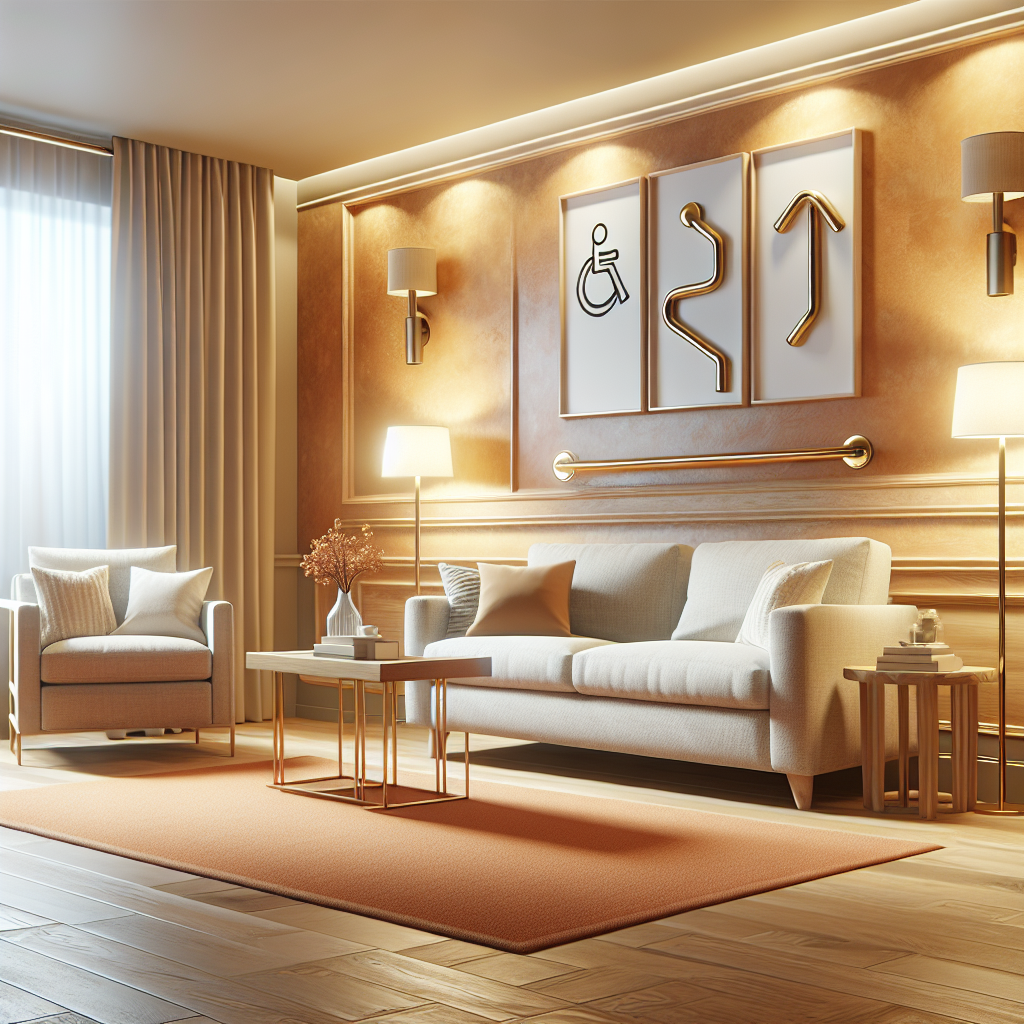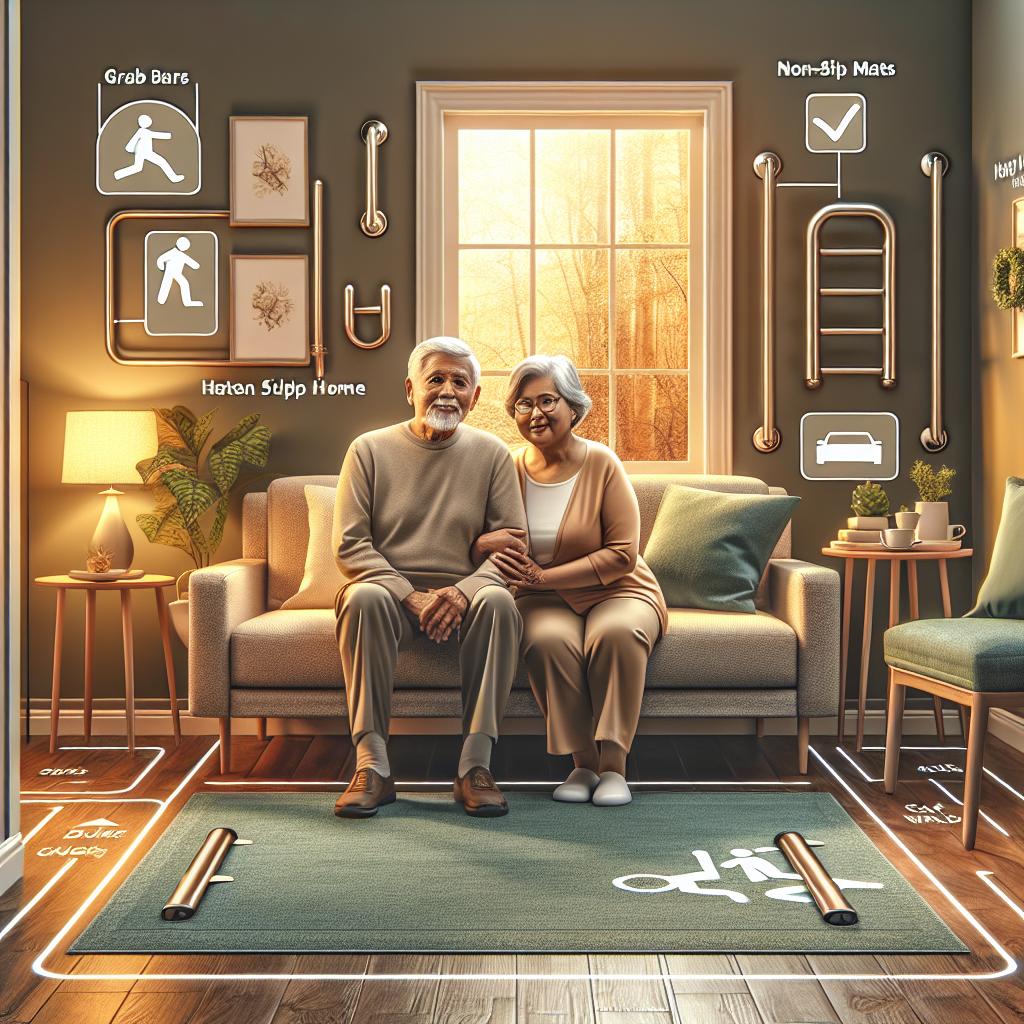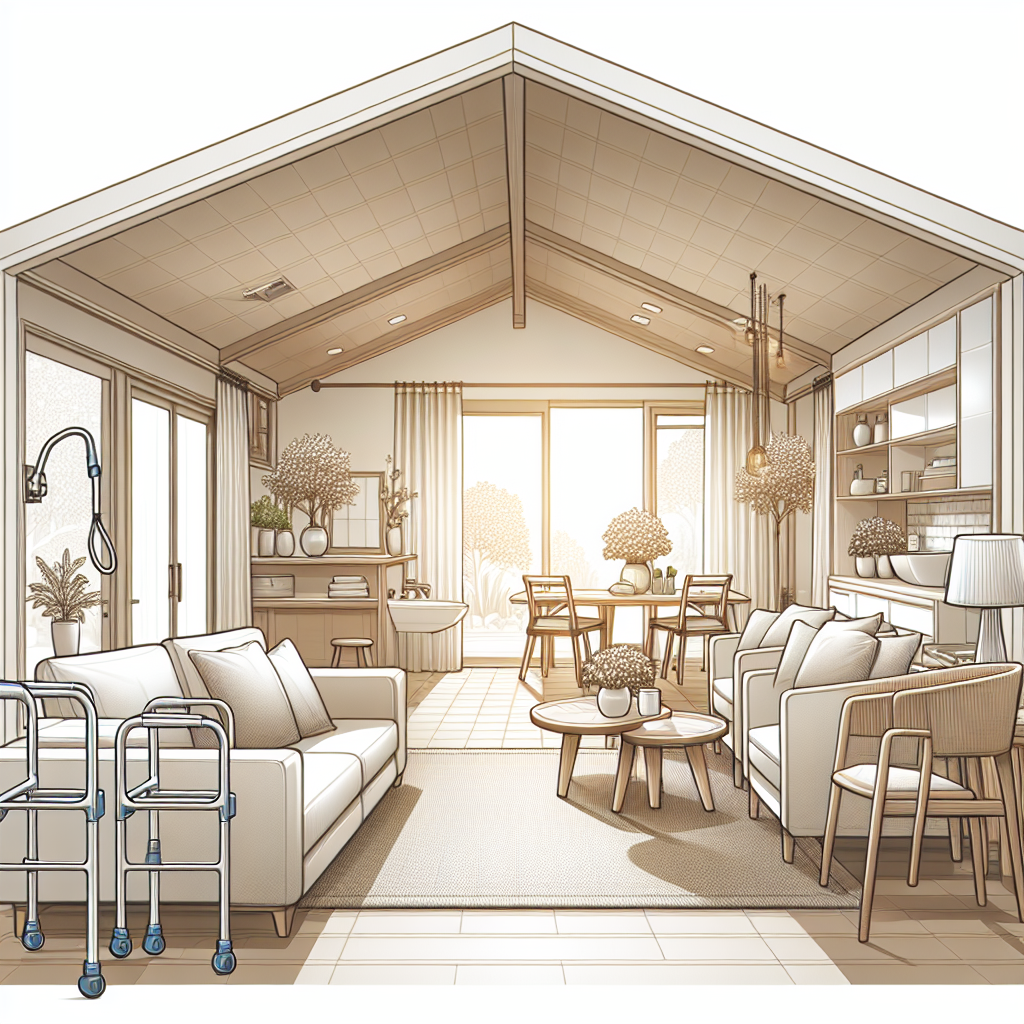Ultimate Home Safety Guide: 25 Essential Checks for Aging in Place
Introduction
Welcome to the Ultimate Home Safety Guide, where we’re diving into the nitty-gritty of keeping our aging loved ones safe and sound at home. If you’re like most adult children, you probably find yourself juggling a million thoughts about your parents’ safety from worrying about their mobility to ensuring they have a secure living space. It’s a lot, right?
Let’s face it: home safety for seniors is not just about installing grab bars in the bathroom (although, spoiler alert, that’s definitely on our list). It’s about creating an environment where our seniors can thrive, feel independent, and avoid those pesky accidents that can turn a cozy home into a hazard zone.
In this guide, we’ll cover 25 essential checks that make up your home safety for seniors checklist. We’ll explore practical tips ranging from simple modifications to advanced elderproofing techniques. Think of this as your one-stop shop for all things related to senior home safety because nobody wants to be that person who forgets to remove the throw rug (seriously, they are notorious trip hazards).
So grab a cup of tea (or coffee if you need an extra boost) and let’s embark on this journey together. By the end of this post, you’ll be armed with actionable insights and strategies that can turn any house into a safe haven for your aging parents. Ready? Let’s go!
Understanding Home Safety for Seniors
When it comes to home safety for seniors, we’re not just talking about avoiding the occasional stubbed toe or misplaced remote. We’re diving into a world where every corner of the home can be a potential hazard, but also a haven with the right precautions. Think of it as creating a cozy fortress one that’s not only safe but also feels like home.
First off, let’s chat about why this matters. Did you know that falls are the leading cause of injuries among older adults? Yup, those little slips can lead to serious consequences. So, ensuring a secure living space for elderly loved ones isn’t just nice; it’s essential. A well-thought-out home safety for seniors checklist can help mitigate these risks.
Common Risks in the Home
Now, what are those pesky risks lurking in our homes? Here’s a quick rundown:
- Slippery floors: Whether it’s from spills or freshly mopped tiles, these surfaces can be treacherous.
- Poor lighting: Dimly lit areas are like ninja hazards they sneak up on you!
- Clutter: Who knew that stack of magazines could turn into an obstacle course?
- Bathroom dangers: Wet surfaces and high tubs can spell disaster without proper modifications.
- Lack of mobility aids: Sometimes, all it takes is a grab bar or a sturdy cane to make all the difference.
The Emotional Aspect of Home Safety
Beyond physical risks, let’s not overlook the emotional side of things. Ensuring safety at home means peace of mind not just for seniors but for their families too. It alleviates worries about accidents and fosters independence, allowing our aging loved ones to thrive in their own space without constant supervision.
Takeaway: A secure living environment is vital for seniors’ well-being and peace of mind. Regularly updating your home safety for seniors checklist can keep those worries at bay!
Home Safety Tips for Elderly: A Comprehensive Checklist
When it comes to home safety for seniors checklist, it’s all about creating a secure and comfortable environment. Let’s dive into some essential tips that will help keep your aging loved ones safe and sound.
Living Area Safety Checks
- Remove tripping hazards like loose rugs and electrical cords.
- Ensure good lighting in all areas, especially stairs and hallways.
- Arrange furniture to provide clear pathways for mobility aids.
- Add non-slip mats or rugs to prevent slips.
Kitchen Safety Modifications
- Keep frequently used items within easy reach to avoid climbing.
- Install anti-scald devices on faucets and showerheads.
- Add a fire extinguisher within reach, just in case!
- Consider using appliances with automatic shut-off features.
Bathroom Safety Essentials
- Install grab bars near the toilet and in the shower/tub area.
- Add a non-slip mat inside the tub or shower to prevent falls.
- Use a shower chair or bench if balance is an issue.
- Consider a raised toilet seat for easier access.
Bedroom Safety Considerations
- Ensure that bedside lamps are easily accessible for nighttime use.
- Keeps essentials like glasses and medications within arm’s reach.
- If possible, use a bed that is at an appropriate height for getting in and out easily.
- Add motion-sensor night lights to guide the way to the bathroom.
Outdoor and Garden Safety Tips
- Mow the lawn regularly and keep pathways clear of debris.
- Add handrails on outdoor steps or ramps for extra support.
- If gardening is a hobby, consider raised garden beds to reduce bending over.
- Avoid outdoor activities during extreme weather conditions safety first!
The goal of these home safety tips for elderly individuals is not just about preventing accidents but also about fostering a secure living space where they can thrive. By implementing these strategies, you are taking significant steps toward ensuring peace of mind for both you and your loved ones!
Elderly Fall Prevention Checklist
Falls are the leading cause of injury among seniors, and they can turn a cozy home into a hazardous jungle. But fear not! With our elderly fall prevention checklist, you can transform your home into a safe haven for your aging loved ones.
Identifying Fall Hazards in the Home
The first step in preventing falls is to identify potential hazards lurking around your home. Here’s what to look for:
- Clutter: Keep walkways clear of shoes, bags, and other tripping hazards.
- Loose Rugs: Secure area rugs with double-sided tape or remove them altogether.
- Poor Lighting: Ensure all areas are well-lit, especially staircases and hallways.
- Uneven Surfaces: Repair any cracks or uneven flooring that could lead to trips.
- Cords and Wires: Tuck away electrical cords to avoid tangles and falls.
Implementing Preventive Measures
Once you’ve identified the hazards, it’s time to take action! Here are some effective preventive measures:
- Install Handrails: Add handrails on both sides of stairways for extra support.
- Nonslip Mats: Use nonslip mats in bathrooms and kitchens to prevent slips on wet floors.
- Shoe Choice: Encourage wearing shoes with good traction instead of slippers or socks.
- Bathroom Modifications: Consider grab bars near toilets and in showers, as well as a shower stool for added safety.
- Aging in Place Features: Look into installing walk-in tubs or curbless showers for easier access.
Utilizing Mobility Aids Effectively
If your loved one needs a little extra help getting around, mobility aids can be game-changers. Here’s how to make the most of them:
- Cane/Walker Use: Ensure they know how to use their cane or walker properly practice makes perfect!
- Scooters/Wheelchairs: Assess whether these assistive devices are needed for longer distances or outdoor activities.
- Bells and Alerts: Consider using alert systems that allow seniors to call for help if they fall or feel unsteady.
This checklist is just one part of a broader strategy when it comes to maintaining home safety for seniors. By making these adjustments now, you can help ensure that your loved ones remain safe and maybe even keep their adventurous spirits alive!
Aging in Place Safety Checklist: Key Modifications and Features
As we age, our homes should evolve to meet our changing needs. Think of it like upgrading from a flip phone to a smartphone it’s all about making life easier and safer! Here’s your home safety for seniors checklist that outlines essential modifications and features for a secure living space.
Handicap Accessible Home Features Overview
Creating a handicap accessible home is crucial for promoting independence. Here are some must-have features:
- Wider Doorways: Ensure doorways are at least 32 inches wide to accommodate wheelchairs or walkers.
- No-Step Entries: A level entrance avoids the tripping hazards posed by stairs.
- Ramps Instead of Stairs: Ramps offer easier access, especially if mobility is limited.
Senior-Friendly Bathroom Fixtures and Installations
The bathroom can be a slippery slope literally! Here’s how to make it safer:
- Grab Bars: Install these near toilets and in showers to provide support.
- Non-Slip Mats: Use these in the shower and on bathroom floors to prevent falls.
- Raised Toilet Seats: These make sitting down and standing up much easier for seniors.
Aging in Place Design Ideas for a Secure Environment
Your home can be both stylish and safe! Consider these design ideas that blend aesthetics with functionality:
- Smart Home Technology: Use voice-activated devices for lights, thermostats, and security systems. It’s like having your own personal assistant!
- Clever Lighting Solutions: Install motion-sensor lights in hallways and staircases to illuminate paths automatically at night.
- Elderly Mobility Aids at Home: Strategically place walking aids like canes or walkers where they’re most needed, such as near the bed or bathroom.
Elder Care Home Safety Advice: Best Practices for Family Caregivers
As family caregivers, navigating the world of home safety for seniors can feel like trying to find your way through a maze blindfolded. But fear not! With the right strategies, you can create a secure living space that allows your aging parents to thrive in their own home.
Caring for Aging Parents’ Safety at Home
First things first: assess the home environment. Is it a safe haven or a potential hazard zone? Use an elderly fall prevention checklist to identify risks such as:
- Loose rugs that could cause trips.
- Poor lighting in hallways and staircases.
- Cluttered walkways that could hinder mobility.
Consider making some essential modifications. Simple upgrades like installing grab bars in bathrooms and ensuring that frequently used items are within easy reach can make a world of difference. These are examples of effective home modifications for seniors.
Emergency Preparedness for Older Adults at Home
No one likes to think about emergencies, but being prepared is key! Create an emergency plan that includes:
- A list of emergency contacts (family members, neighbors, local services).
- A designated meeting place in case evacuation is necessary.
- Essential supplies like medications and a first aid kit readily available.
Did You Know? According to the National Council on Aging, falls are the leading cause of fatal injuries among older adults. This makes it critical to prioritize safety measures at home!
Crisis Management and Response Strategies for Caregivers
If an incident does occur, having a crisis management strategy is essential. Here’s what you can do:
- Stay calm and assess the situation panic doesn’t help anyone!
- If necessary, call emergency services immediately.
- Afterward, review what happened to prevent future incidents learning from experience is key!
Remember, creating a secure living space for your loved ones is not just about preventing falls; it’s about fostering independence while ensuring they feel safe. Implement these best practices today to enhance their quality of life and yours too!
Creating a Safe Living Space for the Elderly: Practical Solutions and Tips
When it comes to home safety for seniors checklist, creating a secure living space is paramount. Think of it as setting up a cozy, protective fortress where your aging loved ones can thrive without worrying about bumps and bruises. Here are some practical solutions and tips that will help you transform any home into a haven.
Fire Safety Tips for Seniors at Home
Fires can be sneaky little devils, so let’s outsmart them! Here are some fire safety tips:
- Install smoke detectors on every floor and test them monthly. Bonus points for adding carbon monoxide detectors too!
- Keep a fire extinguisher handy in the kitchen, and make sure everyone knows how to use it just like knowing how to make a perfect cup of tea.
- Encourage the use of flameless candles instead of traditional ones. They’re safer and still create that cozy ambiance.
Best Practices for Senior Home Security Measures
A secure home is a happy home! Here’s how to beef up security:
- Install deadbolts on exterior doors. They’re like the bouncers of your home, keeping unwanted guests out.
- Add motion sensor lights outside. These little guys will scare off intruders faster than an unexpected visit from the in-laws!
- Consider a monitored security system. It’s like having a superhero watching over your loved ones 24/7.
Simplifying Daily Activities to Enhance Safety and Comfort
The simpler life is, the safer it can be! Here are some tips to simplify daily activities:
- Declutter living spaces to prevent tripping hazards because no one wants to play hopscotch with their coffee table!
- Use non-slip mats in areas prone to moisture, like bathrooms or kitchens. It’s basically giving those floors a friendly reminder not to be slippery.
- Invest in assistive devices, such as grab bars in bathrooms or stairlifts if needed. Think of them as personal sidekicks ready to lend a helping hand!
Conclusion: Ensuring a Secure Environment for Aging Loved Ones
Creating a safe and secure environment for our aging loved ones is not just a checklist item; it’s an ongoing commitment that reflects our love and care. The home safety for seniors checklist serves as a vital tool in this journey, guiding us through essential modifications and precautions that can help prevent accidents and enhance the quality of life.
As we explore the world of elderly safety precautions at home, it’s crucial to remember that every home is unique. What works in one household may not fit another. This is where understanding individual needs becomes paramount. For instance, if your loved one struggles with mobility, consider integrating elderly mobility aids at home, such as grab bars or a sturdy shower chair it’s like giving them a superhero cape to navigate their space safely!
Moreover, implementing home modifications for seniors can be as simple as rearranging furniture to create clear pathways or ensuring adequate lighting in hallways to avoid those pesky nighttime trips. Remember, even the smallest changes can make a significant impact on creating a secure living space for elderly.
Key Takeaway: Regularly review and update your aging in place safety checklist. Safety isn’t a one-and-done deal; it requires vigilance and adaptability as your loved one’s needs evolve.
Common Misconceptions to Avoid
- Myth: “My loved one doesn’t need any modifications; they’re fine.”
Truth: Most accidents happen at home, and proactive measures are essential. - Myth: “Only major renovations count.”
Truth: Small adjustments like removing throw rugs or adding non-slip mats can be game-changers! - Myth: “Safety devices are too expensive.”
Truth: Many effective solutions are budget-friendly think DIY options or community resources.
A Final Nudge Towards Action
If you haven’t yet started on your journey of creating a safe haven for your aging parents or loved ones, now is the perfect time! Dive into the specifics of the senior home safety guide provided earlier, make those necessary adjustments, and don’t hesitate to consult professionals when needed. Together, we can ensure that our elders live not just longer but also safer and happier lives.




